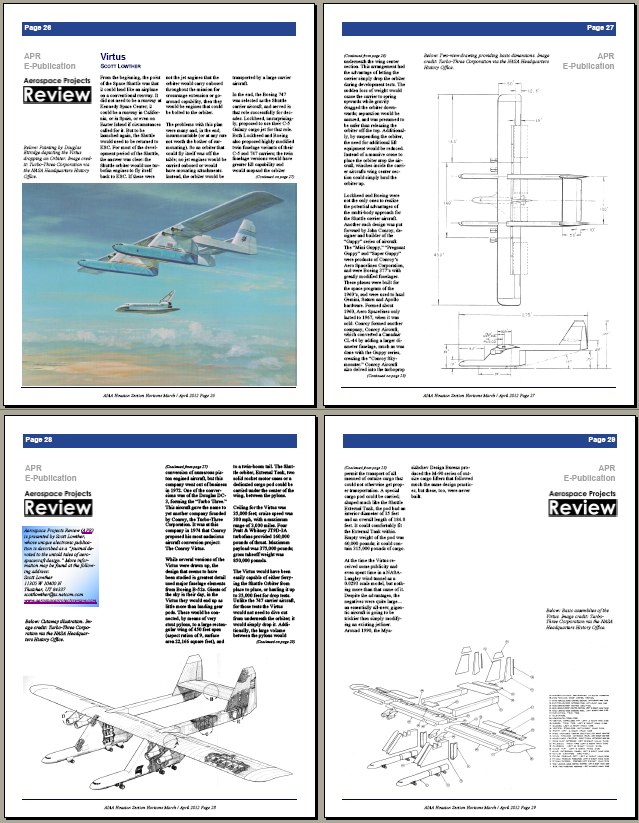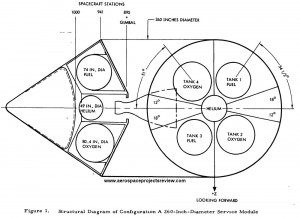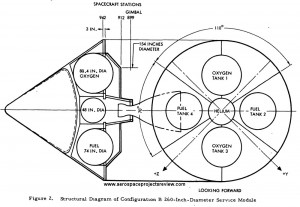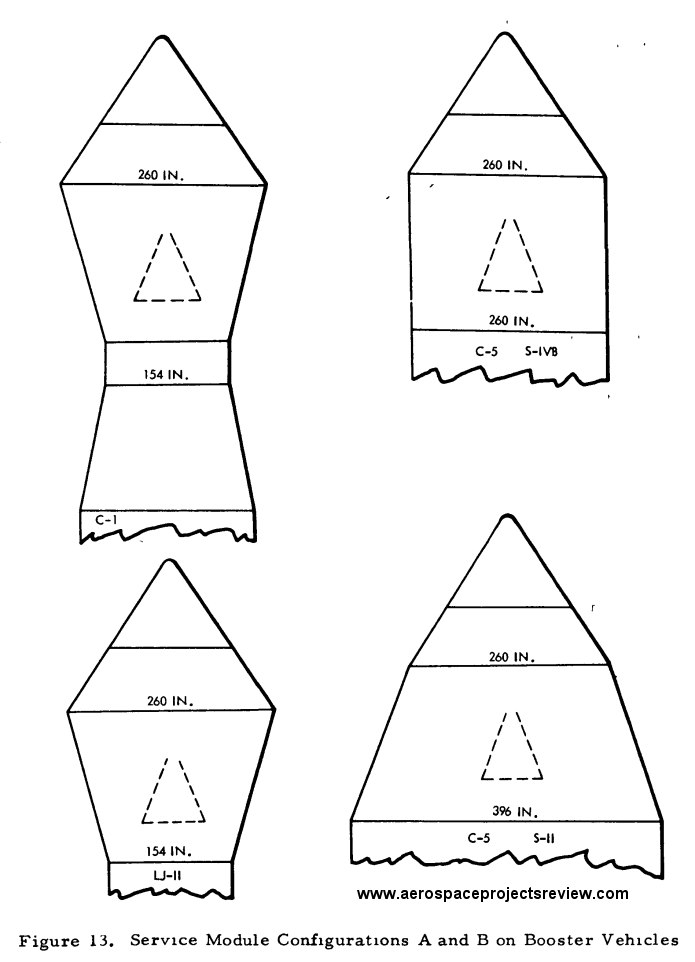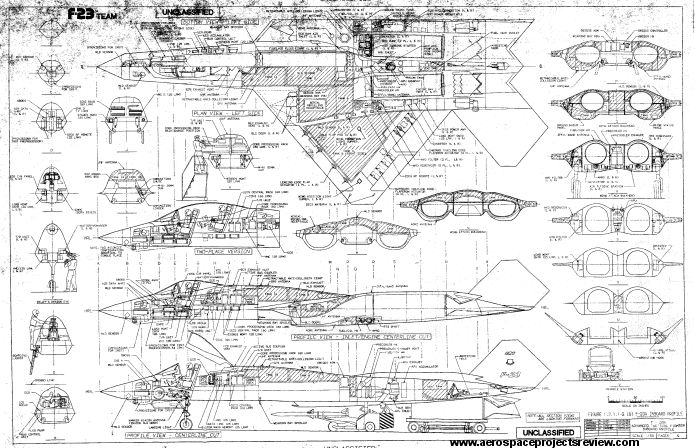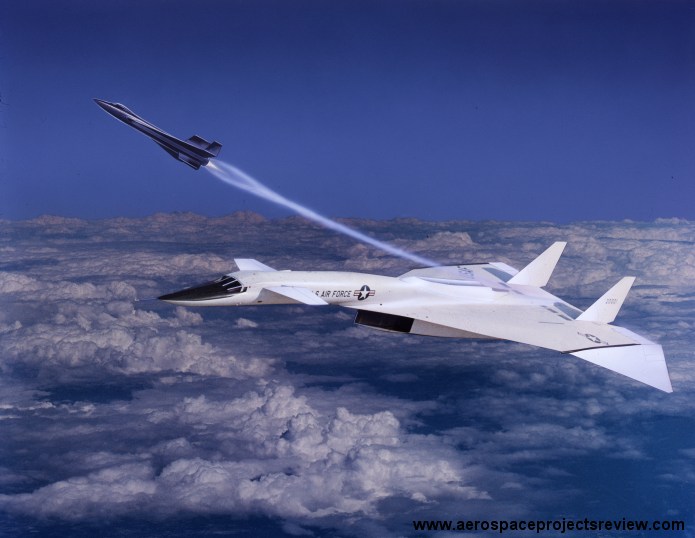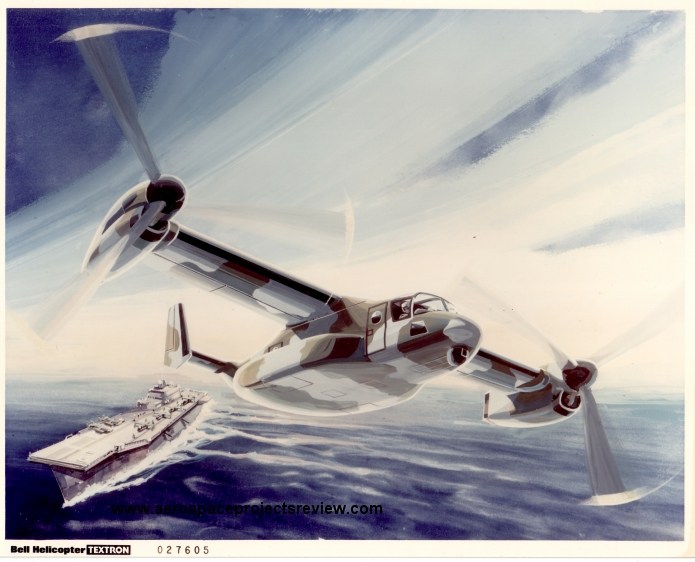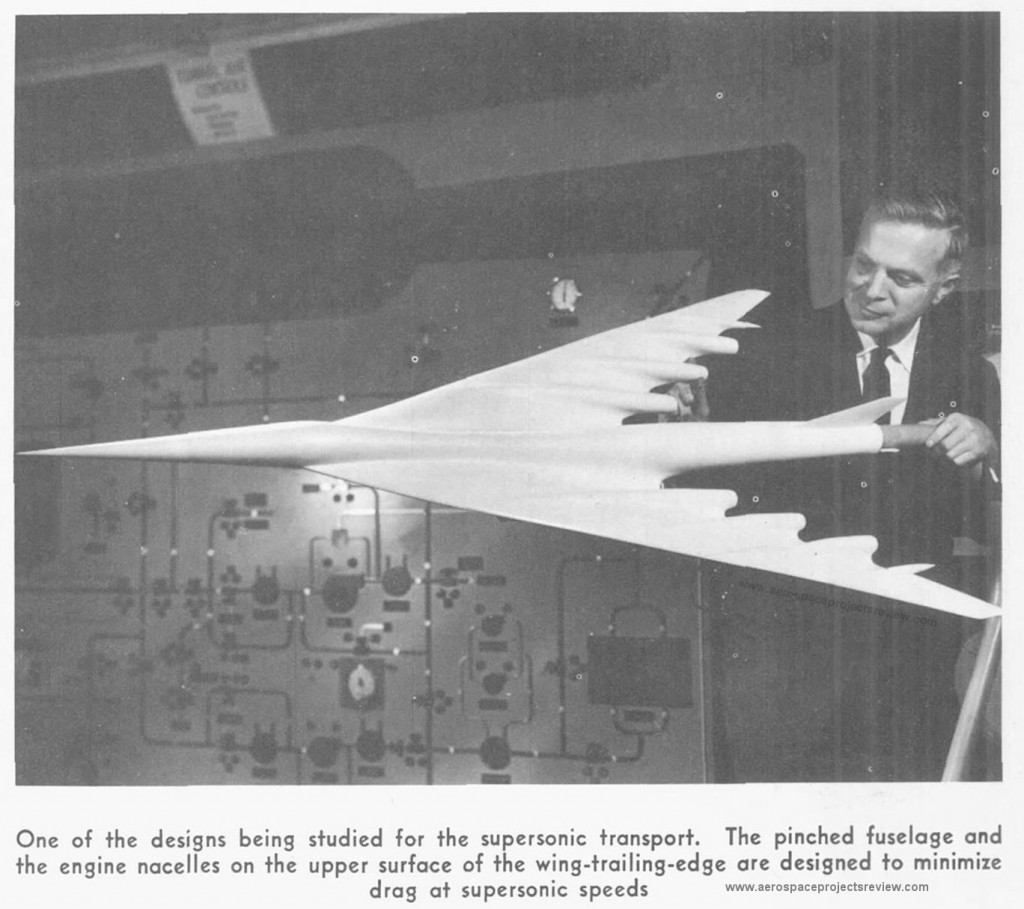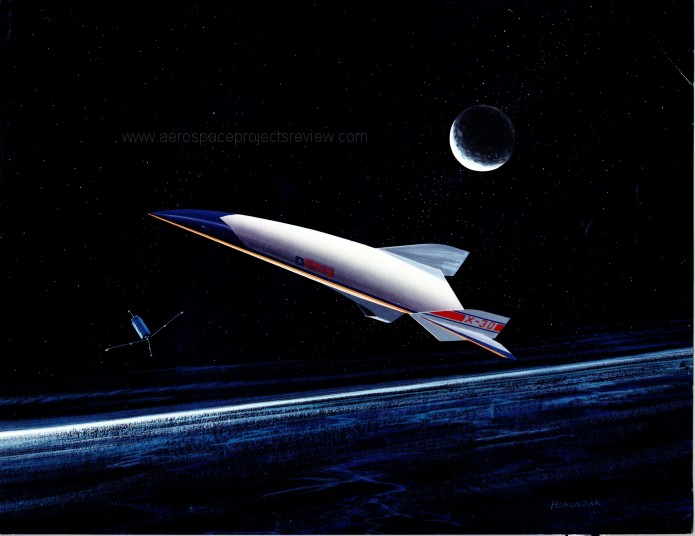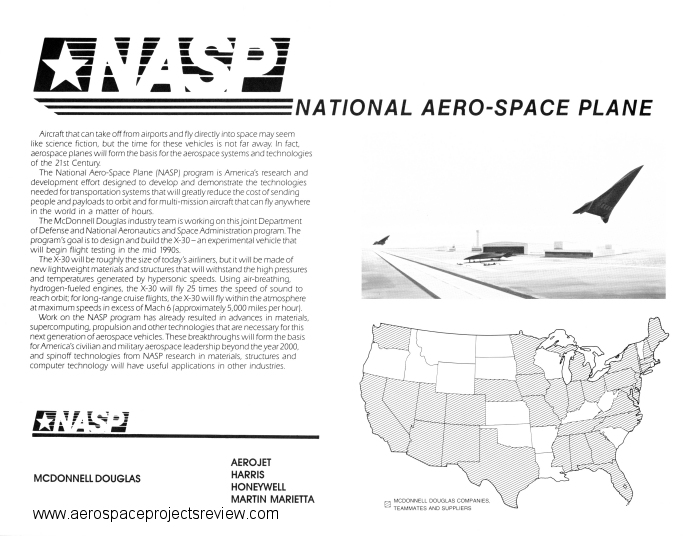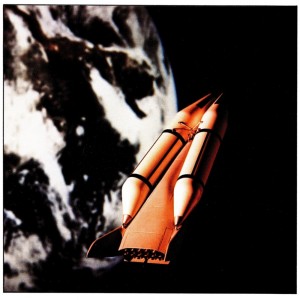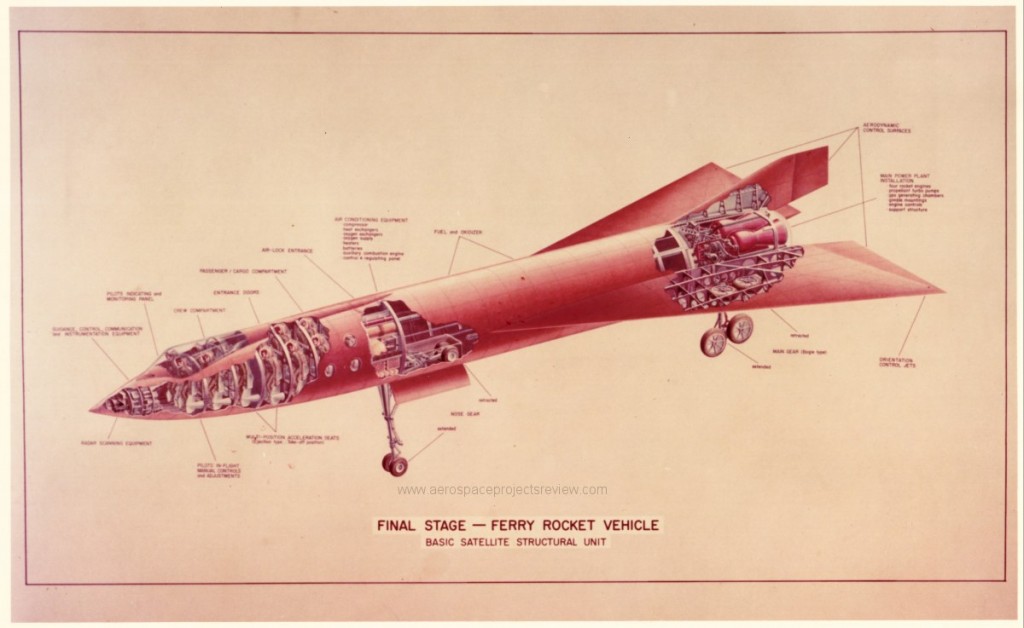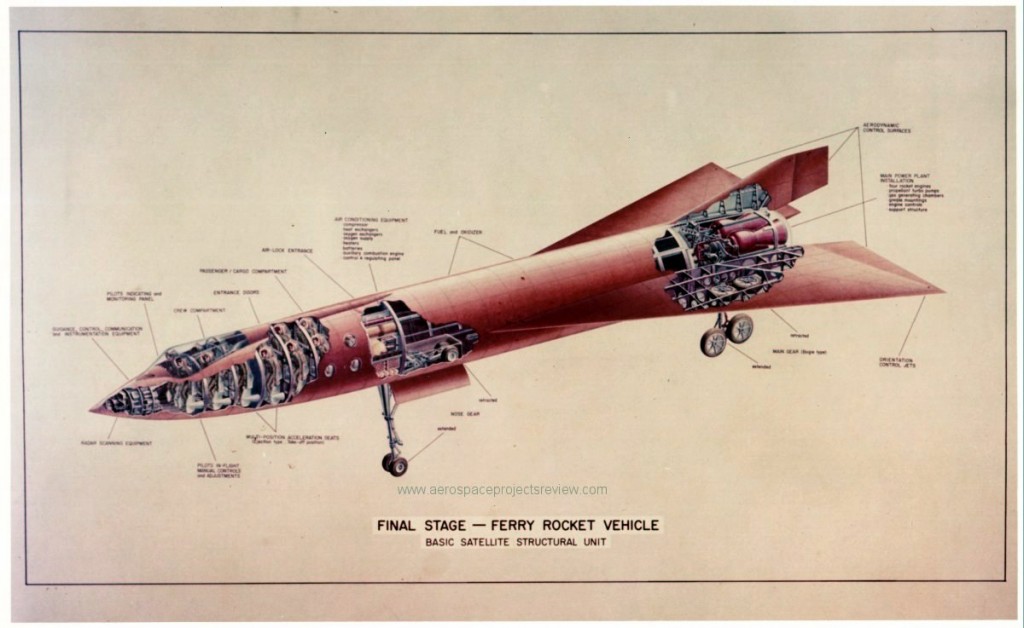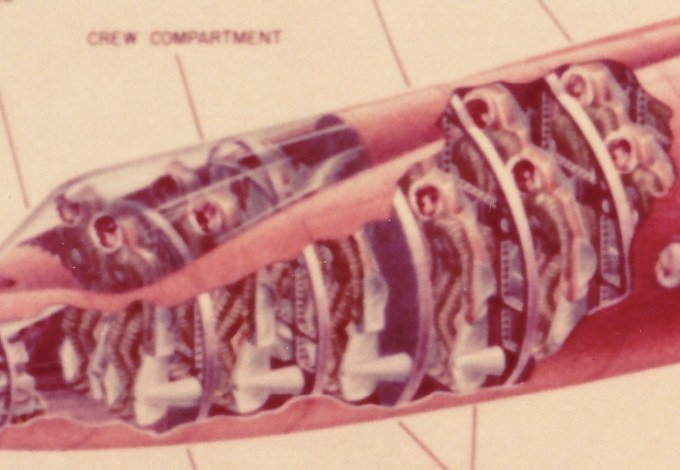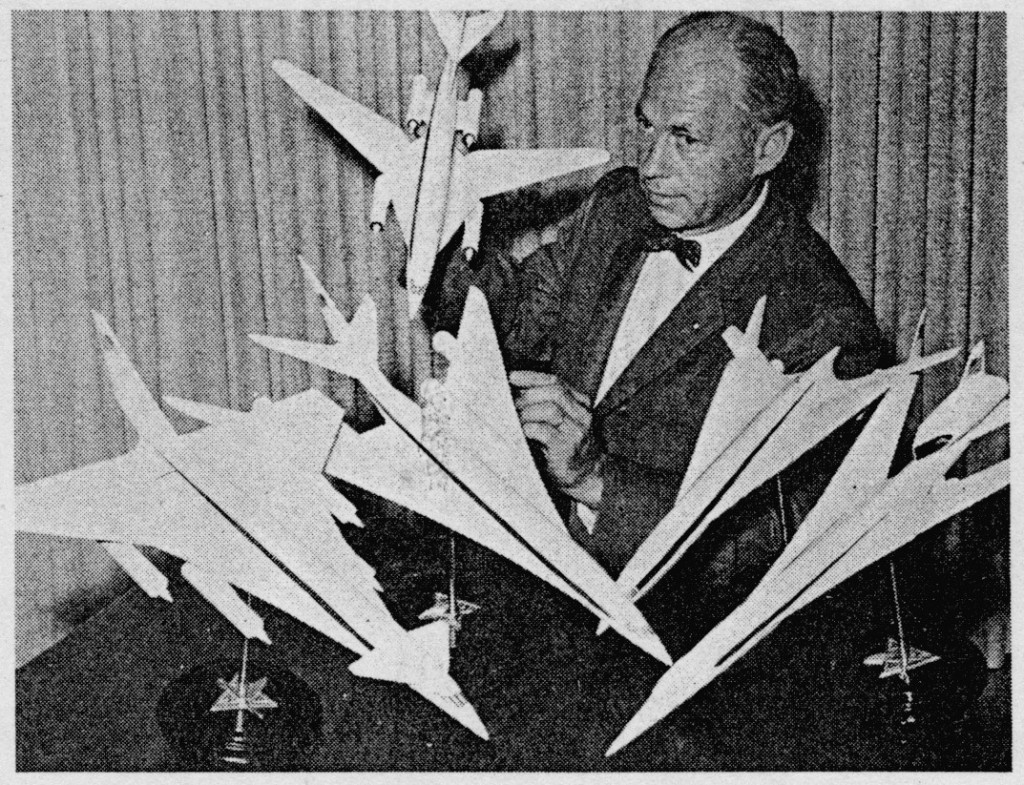The Houston AIAA section has published a 4-page article I put together on the Conroy “Virtus,” a twin-fuselage heavy lift aircraft built from B-52 parts meant to serve as the Space Shuttle Carrier Aircraft. You can download it (in the March/April 2012 issue of Horizons) for free here:
A 1962 study by North American Aviation produced designs for the Apollo Service Module designed to mate directly to the 260-inch-diameter Saturn S-IVb and other stages. At the request of the NASA Manned Spacecraft Center (later known as the Johnson Space Center), NAA studied whether it would be advantageous to increase the 154-inch base diameter of the Service Module.
In short, the wider vehicle was found to be aerodynamically superior than the baseline configuration when used on the Saturn C-5 (later known as the Saturn V), but aerodynamically inferior when used on the Little Joe II test vehicle and the early Saturn C-1. Additionally, the engine would be easier to install, inspect and maintain; the conical surface was better for the radiators, and the larger moment arm improved performance of the reaction control system. Unfortunately, the wider service module would be about 1000 pounds heavier at burnout than the 154-inch baseline, and the lunar module adapter would have to be notably heavier as well. Given the primary importance of mass in the Apollo program, this result was probably the most important.
Two 260-inch diameter configurations.
This design was featured in the F-23 derivatives article in the recent V3N2 issue of Aerospace Projects Review. This was Northrops plan for an operational follow-on to the YF-23, with some notable geometry changes.
You can download a 2.5 megabyte GIF file of the diagram. The link to the JPG file is HERE. To access it, you will need to enter a username and password. These are available on the first page of the Aerospace Projects Review V3N2 Addendum (available HERE) Note that both are case sensitive.
The proposed X-15A-3 was a stretched, delta-winged version intended for extended duration flight at Mach 6+. As with the X-15 and X-15A-2 versions, the plan was to launch the X-15A-3 from a B-52 underwing pylong. However, North American Aviation proposed launching it from atop a B-70 bomber. The theory was that the B-70 could get the X-15 up to around Mach 3 prior to separation, thus greatly improving the rocketplanes performance. However, launchign winged vehicles from the back of supersonic aircraft is non-trivially difficult… as the M-21/D-21 crash demonstrated.
The X-15A-3 shown here is an early design. The final version featured diamond-shaped wingtip fins.
You can download a 12 megabyte JPG file of the artwork; the link is HERE. To access it, you will need to enter a username and password. The username: the first word in the body of the text on page 3 of APR issue V2N6. The password: the first word in the body of the text on page 4 of the same issue. Note that both are case sensitive.
Dates from the late 80’s or early 90’s.
You can download a 3 megabyte JPG file. The link to the JPG file is HERE. To access it, you will need to enter a username and password. The username: the first word in the body of the text on page 13 of APR issue V3N1. The password: the first word in the body of the text on page 21 of the same issue. Note that both are case sensitive.
From the Fifth Semiannual Report to Congress (NASA, 1961) comes a photo of a supersonic transport wind tunnel model. This configuration would have been quite difficult to translate into a practical airliner design; while the dedication to area ruling would have made it quite low drag at supersonic, it would have made manufacturing a nightmare. Additionally, the severe wasp-waisting of the fuselage would have made not only the structural design of the pressure vessel a challenge, it would have made the passenger seating layout quite a mess.
This card shows an early (late 1980’s) McDonnell-Douglas design for NASP. A relatively fat lifting body design, this has many similarities to hypothetical “Aurora” hypersonic spyplane designs bandied about at the same time. This is not surprising… this NASP design is similar to any of a number of hypersonic configurations tested in NASA wind tunnels and shown publicly.
Note that the text on the back of the card describes a vehicle somewhat different than what NASP was supposed to be. The claim is made that the scramjets could power the vehicle Mach 25, orbital velocity… of they could allow the vehicle to cruise at Mach 6 for long range hypersonic transport. Early on in the program, the “Orient Express” was touted as a logical result of NASP work, but that quickly faded.
You can download 5.3 and 2.5 megabyte JPG files of the illustrations. The links to the JPG files are HERE and HERE. To access them, you will need to enter a username and password. The username: the first word in the body of the text on page 5 of APR issue V1N1. The password: the first word in the body of the text on page 11 of the same issue. Note that both are case sensitive.
Another one from Lockheed Horizons, a rare color photo of a later STAR Clipper configuration. This one-and-a-half-stage-to-orbit design dates from the early days of the Space Shuttle program. Much, much more on the STAR Clipper and its Shuttle descendants can be read about in issue V3N2 of Aerospace Projects Review.
One of the pleasant surprises from my recent trip to D.C. was obtaining a scan of a color version of an illustration I’ve only ever seen in B&W… the Goodyear “METEOR” spaceplane design from about 1956. This was part of a truly audacious plan put forward by Goodyear’s Darrel Romick and others to develop a “city in space,” a giant space station with artificial gravity and giant hangars for spacecraft.
The color seems to be off, due, likely, to the fading effects of half a century. But even after some “fade correction” processing, it’s clear that the spaceplane was painted red… an interesting choice.
And it’s a little difficult to tell, but a closeup focusing on the crew seems to either show that the heads were pasted on, or are surrounded by some sort of bubble helmets.
Much more on the METEOR plan is available HERE.
